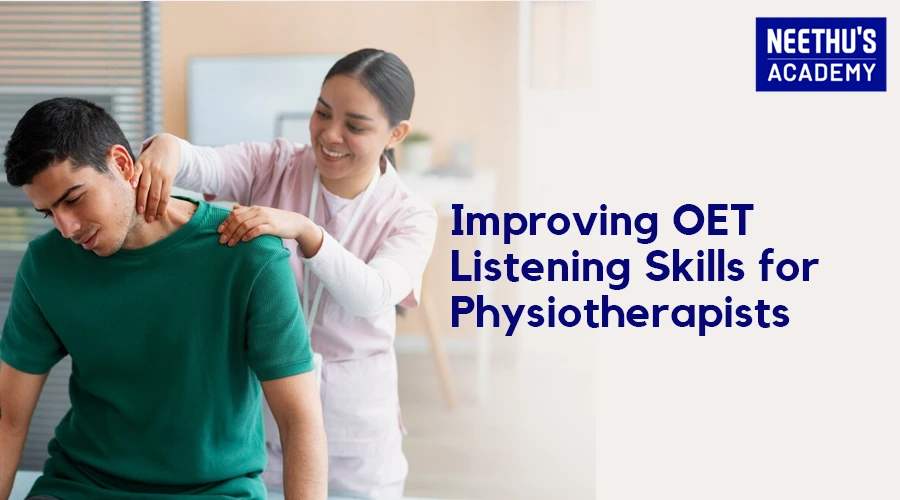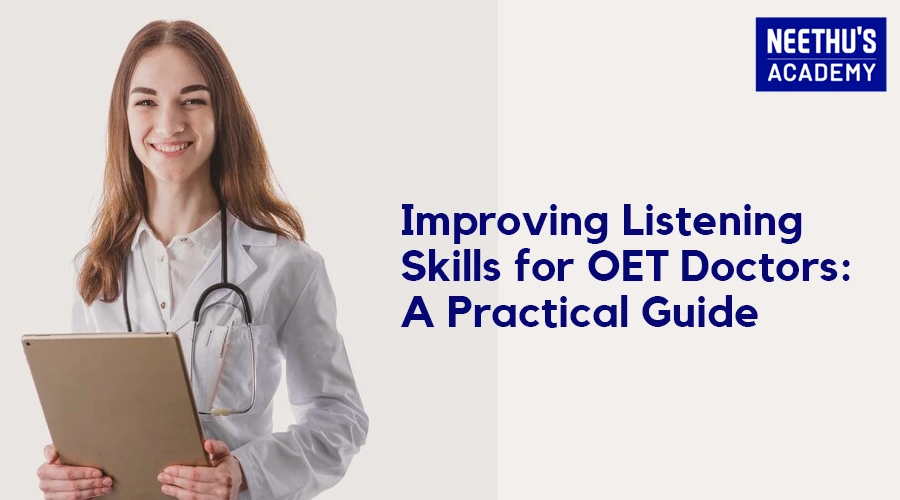How to Prepare for the OET Reading Section: Strategies and Tips
When thinking of a reliable English language proficiency test for Healthcare workers, the first name that comes to our mind would be The Occupational English Test commonly known as OET. This test is specifically tailored to evaluate the communication skills and language use of medicos planning to work in an English-speaking country, which is quite important given the fact that they have to be able to convey things effectively and accurately to provide quality patient care. The reading section of the OET has much to do with your ability to understand and interpret numerous healthcare-related texts. Understanding how to prepare for OET Reading will improve your chances of obtaining high scores on your test.
Passing the OET test requires more than just having basic language skills but rather a level of practical knowledge of medical terminology, an ability to quickly draw meaning from text, and the capacity to extract information very effectively. All of these competencies are tested in the reading section, which is broken into three separate parts: A, B, and C. Each of these requires a different approach and skill set, which we shall go over in detail. By the end of this guide, you shall have built a comprehensive toolkit to help prepare for the reading section in the OET test.
OET Reading Test: Overview
There are three parts of the Reading section of OET. It tests different kinds of reading skills as specified in the structure, and understanding this is necessary for good preparation.
Part A: This test assesses the ability to find different information quickly in several texts. You will read short texts and answer questions based on that information.
Part B: This consists of six short, work-related texts. You are required to know the general ideas and particular details from the texts. It focuses on workplace communication policies, memos, and other documents that should be included.
Part C: In this section, you will be asked to interpret and answer questions about complex health material for two long texts. Part C will assess your skills in understanding subtle arguments and rich details.
Breakdown of the OET Reading Section
Part A: Expeditious Reading
Part A of the OET reading exam is considered to be the most time-sensitive. You should spend 15 minutes reading four short texts and answering 20 questions. This section assesses your ability to rapidly identify material relevant to a given question.
Key tips for Part A
Skimming and Scanning Techniques will be great in the OET Reading section. Skim to get keywords and main ideas that give you a general sense of a passage: Now it is time to scan for specific answers, and become familiar with different types of questions, particularly fill-in-the-blank and matching exercises. Effective time management also comes handy during the test: allocate sufficient time for each part of the test and also leave enough time to read through the answers, thereby boosting confidence and a generally good performance.
Part B: Workplace Communication
Part B consists of six short texts that usually deal with the workplace context in which communication will take place. Each text is aimed at reflecting aspects of real-life practice in health care, for example, patient leaflets or safety guidelines.
Key tips on Part B
The ability to identify the main theme of each text is important for passing the OET reading section. Since many of the questions will be based on the central theme, pay attention to context clues in the text, which provide useful hints for answering questions. Moreover, the use of mock tests for the OET reading will prepare you for the settings of the examination as well as familiarize you with the text types and the way questions may appear. All these techniques will eventually enhance understanding and thus bring about improved confidence for the examination.
Part C: Detailed Comprehension
Part C Two long texts are on topics related to healthcare. You answer multiple-choice questions concerning this. This part is designed to test your ability to understand complex information, interpret arguments, and analyze texts.
Key Tips for Part C
Reading fast but thoroughly is crucial to follow the developer’s argument, and also to get a tone of the whole text within the OET reading. Take your time to understand the text and answer the questions correctly. In addition to this, you need to practice inferences since many questions might require you to draw some conclusions based on what you read from the text. Taking notes on what the main points are as well as the themes can help you do well in memorizing important things while answering your questions. You will find it easier to understand thoroughly and, hence perform better when it comes to the exam.
Effective Strategies for Each Part of the OET Reading Section
Part A
Skimming and Scanning: To do well in Part A, you should master skimming and scanning techniques. Practice skimming to grasp the general idea and scanning to find out particular information as quickly as possible.
Pay attention to Key Words: Find and highlight key words in the questions and texts. This will help you locate answers more efficiently.
Practice under Timed conditions: One has to practice the OET reading practice tests under timed conditions. This will resemble the pressure faced in an actual exam.
Part B
Understand the Main Idea: Always look for the main idea of each text. This will guide you in answers that refer to the text’s overall message.
Eliminate Wrong Answers: Sometimes it is best to eliminate the wrong answers, which leaves only one for you to select and therefore increases the chances of selecting the right answer among multiple-choice questions.
Pay special attention to the author’s tone and purpose: Sometimes clues can be derived for the correct answers based on an understanding of the tone presented by the author, particularly in questions relating to intent or purpose.
Part C
Read with Understanding: Please read the page carefully. Reading the text thoughtfully and carefully will help in understanding the core concept discussed.
Use Contextual Information to Infer Meaning: Sometimes it is required to infer information that isn’t explicitly stated. Keep an eye out for contextual clues that will help you understand what someone meant by what they said.
Summarize Key Points: After reading, summarize the main points and arguments. This can help keep the information fresh in your head and also better remind you of what you have learned.
General Tips for the OET Reading Section
Time Management
Time management is a necessity in the OET Reading test. Practice your pacing with the mock tests so you finish within the time for each portion. An example of such would be to take around 15 minutes for Part A, 20 minutes for Part B, and 30 minutes for Part C. There is some additional time left over for reviewing everything. You can skip over a hard one and come back to it later if you have time.
Vocabulary Building
A good medical vocabulary is key to your success. Read extensively from the medical literature and articles to be familiarized with the terms. Use Flashcards to memorize the difficult terms, and try the usage of words in sentences and paragraphs that comprise medical vocabulary.
Consistent Practice
The best way to improve your reading is through regular practice. Official OET practice tests are available to help you get a feel for the structure and types of questions used in the actual examination. Use timed mock tests to simulate exam conditions for better preparation under pressure on the day of the test. Study groups can bring new insights or better retention through discussion.
Common Mistakes to Avoid in the OET Reading Section
Too Slow to Read: The slower you read, the worse your performance. Increase speed by practicing skimming and scanning.
Misreading Questions: Be sure to know what every question is asking. Some questions word things in such a way that you need to think over what the question is really asking.
Ignore Time Constraints: Sometimes you won’t get enough time to finish some sections. You need to practice with a timer so that you get an idea of how fast and how much you should read in one minute.
Final Thoughts
The OET Reading section requires a strategic approach to achieve success. It consists of three parts, each specifically designed to assess your language proficiency in a medical context. These tasks evaluate your ability to comprehend medical texts and complex vocabularies. Learning how to manage time, practicing skimming and scanning, and building vocabulary ensures you get a passing score in the test. All of this combined with consistent practice and keen determination helps you ace the test with ease!
Frequently Asked Questions





